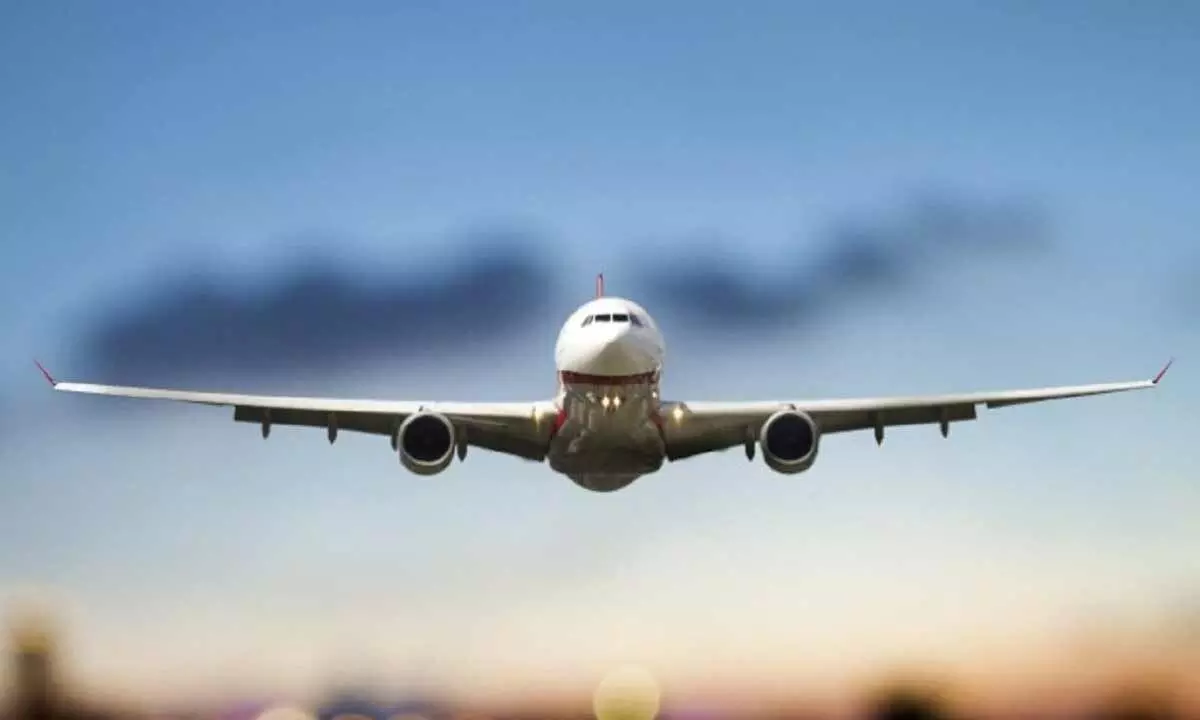Fare cap withdrawal to boost airline's profitability
Airline tickets are high because of various components included in the fare, such as user development fee (UDF), aviation security fee and passenger service fee.
image for illustrative purpose

Airline tickets are high because of various components included in the fare, such as user development fee (UDF), aviation security fee and passenger service fee.
The structure of the airfare is divided into four parts - airline component, airport operator fees, fees to the Airports Authority of India (AAI) and charges paid to the government. The airline component comprises the basic fare, airline fuel charge, common user terminal equipment fee (if applicable) and convenience fee, which is applicable on bookings made online via debit or credit card. Airlines sometimes pass on the higher fuel costs to the customers by charging 'airline fuel charge' or 'fuel surcharge' over and above the base fare. The AAI charges the passenger services fee, while the airport operator levies the airport development fee and the user development fee.
The AAI takes the passenger services fee from the flyer to meet the expenditure on passenger facilities and security at airports.
The Airports Authority of India may also charge the CUTE fees on passengers. The 'Common User Terminal Equipment' (CUTE) fees include charges for the use of metal detecting machines, escalators and other equipment in the airport. CUTE fee is sometimes also referred to as passenger handling fee.
Flyers are also charged passenger security fees or aviation security fees for the Central Industrial Security Force (CISF) personnel deployed at the airports. The various charges are included in your airline ticket, besides the basic fare.
The Ministry of Civil Aviation on Wednesday withdrew the airfare cap with effect from August 31, 2022. The airfare cap was imposed on airlines to cap ticket prices during the pandemic.
The ministry had imposed lower and upper limits on domestic airfares based on flight durations when services were resumed on May 25, 2020, after a two-month lockdown due to the Covid-19 pandemic.
For example, airlines currently cannot charge a passenger less than Rs2,900 (excluding GST) and more than Rs8,800 (excluding GST) for domestic flights of less than 40 minutes. The lower caps were there to protect the financially weaker airlines and the upper caps to protect passengers from high fares.
The Civil Aviation Ministry stated in an order: "After review of the current status of scheduled domestic operations viz-a-viz passenger demand for air travel... it has been decided to remove the fare bands notified from time to time regarding the airfares with effect from August 31, 2022."
The aviation regulator also said there was no need for panic or anxiety with regard to recent snags reported by some domestic airlines and said that 'safety is non-negotiable.' The withdrawal of these caps will allow airlines to offer lower fares and attract more passengers.
High jet fuel costs, as well as the pandemic, slowed the growth of passenger traffic. But all this is contingent on the premise that there are no new Covid waves.
High air fares on the back of a surge in jet fuel costs have dampened demand during the traditionally weak travel season. Consequently, the daily passenger count hovers around an average of 335,000, a number that's expected to touch 390,000-400,000 in the coming period.
Going ahead, capacity addition, the demand-supply situation, and fuel prices could determine pricing. How much you end up spending could also depend on which route you're flying.

